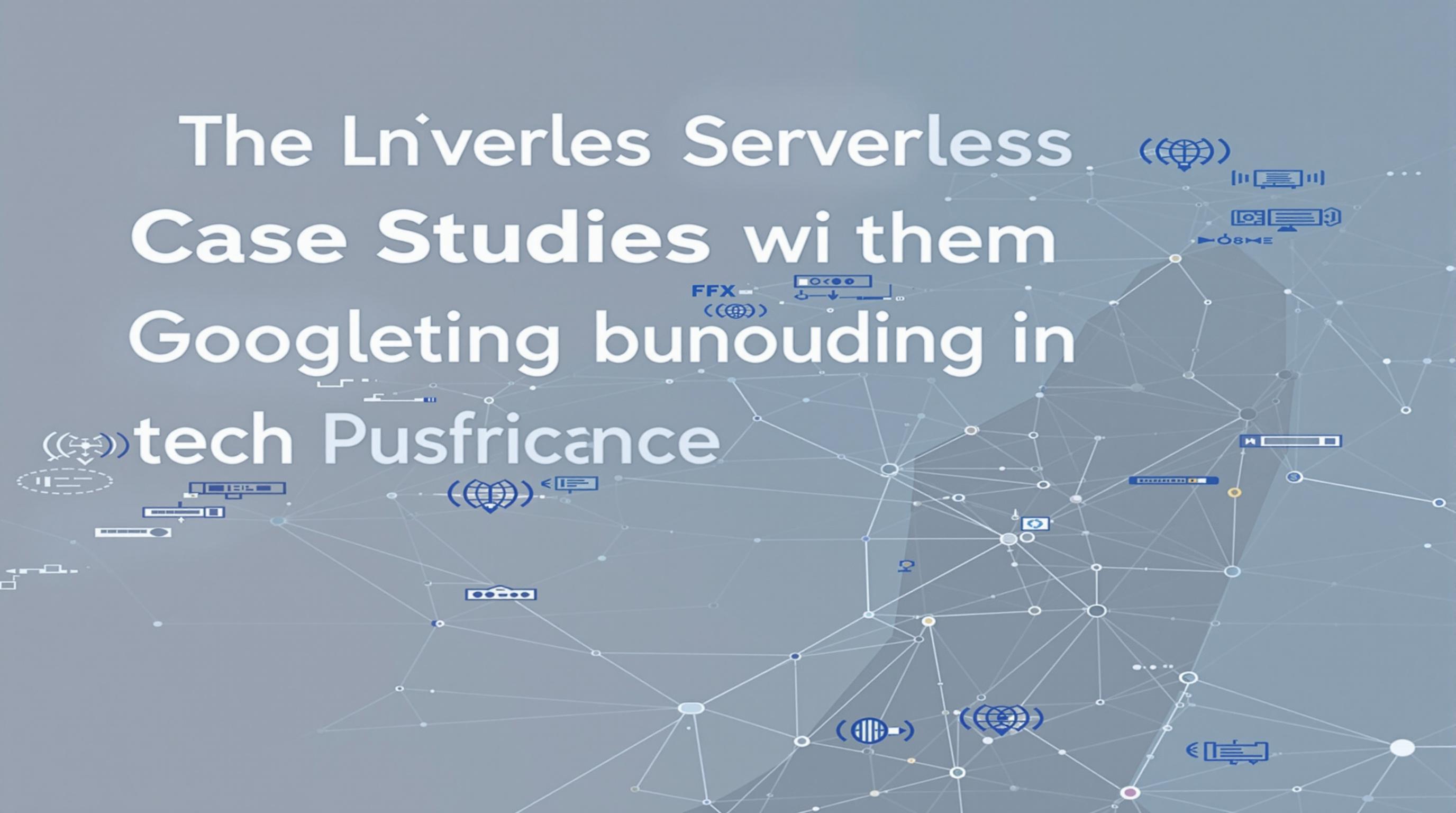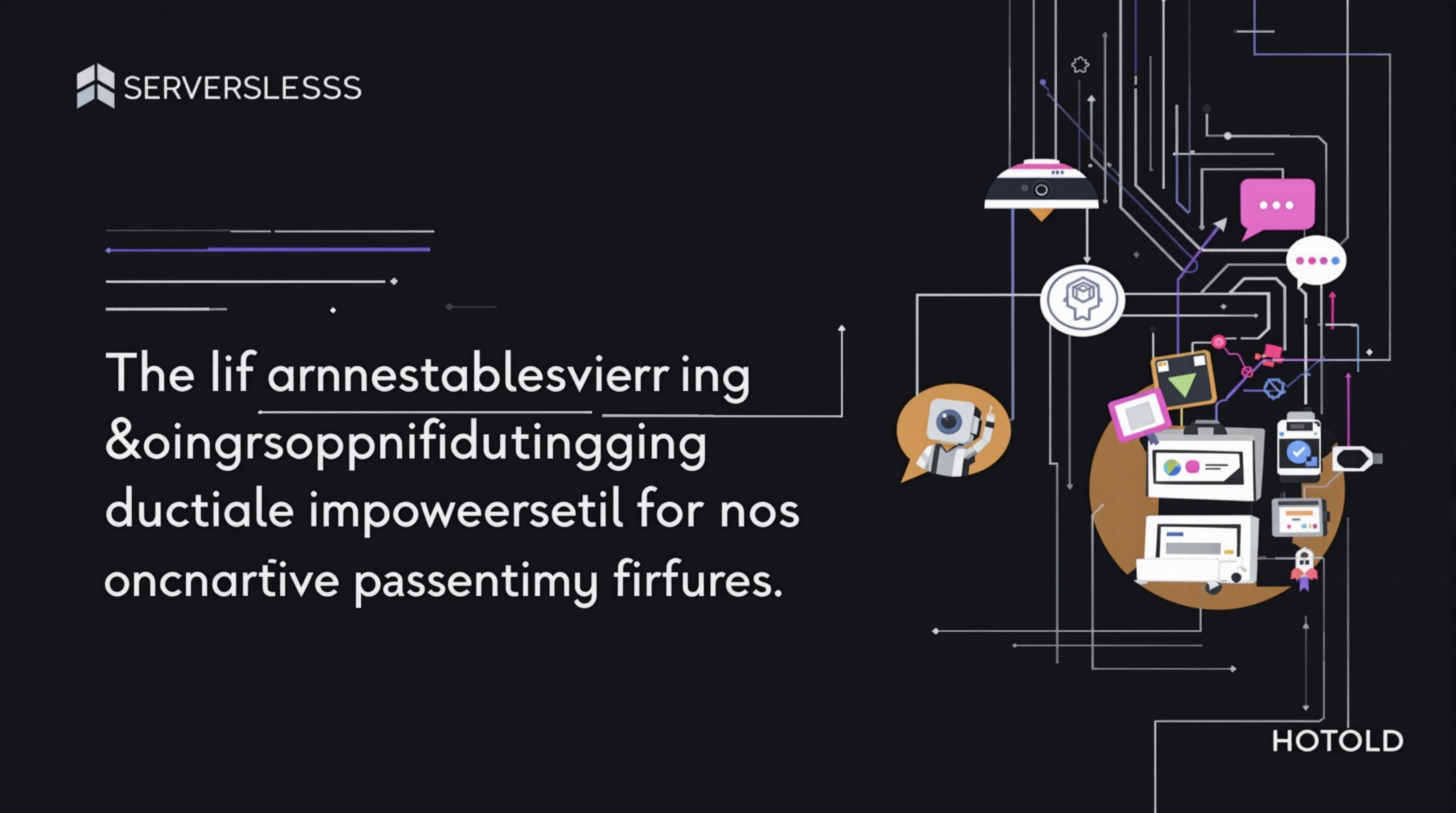Related Articles
- Uncharted Realms: Unveiling Serverless’ Role in Revitalizing Local Economies and Microbusiness Ecosystems
- Unearthing Surprising Synergies: How Serverless Solutions are Reinventing Events and Experiential Marketing Strategies
- Serverless Beyond the Cloud: Unpacking Its Role in Wildfire Management and Ecological Restoration Efforts
- Harnessing Digital Detox: Unplugging to Unleash Creative Energy and Ignite Workplace Performance
- The Surprising Role of Aroma: How Scents Can Unleash Hidden Productivity Boosts in Your Workspace
- Unlocking the Power of Serendipity: How Chance Encounters Can Enhance Team Productivity and Innovation
9 Intriguing Serverless Case Studies Pioneering Automated Compliance Solutions and Innovating Regulatory Navigation in Tech
9 Intriguing Serverless Case Studies Pioneering Automated Compliance Solutions and Innovating Regulatory Navigation in Tech
Introduction
Serverless architecture is redefining how companies approach compliance and regulatory navigation. One cornerstone of this revolution is the ability to automate complex processes that once consumed vast resources.
As organizations face stricter regulations and increased scrutiny, innovative solutions are essential. Serverless frameworks allow for swift deployment and scaling, enabling companies to adapt quickly to changes.
This article highlights nine case studies showcasing how firms are leveraging serverless solutions to enhance automated compliance and navigate regulatory challenges. Each case offers insights into unique applications and outcomes.
Case Study 1: FinTech Regulatory Monitoring
A leading FinTech company utilized serverless functions to create a compliance monitoring system. By automating data collection from regulatory agencies, they significantly reduced manual effort.
Using AWS Lambda, they deployed a system that checks for compliance updates every hour. This proactive approach ensures that the organization remains informed about changes in regulations.
The results were tangible. The company reported a 65% drop in non-compliance incidents in the first five months. This example illustrates the power of automation in regulatory compliance.
Case Study 2: Healthcare Data Protection
A healthcare provider implemented a serverless architecture for patient data protection. By adopting an automated compliance framework, they managed to secure sensitive information while adhering to HIPAA requirements.
Utilizing Google Cloud Functions, the provider automated routine audits and compliance checks. This not only streamlined processes but also enhanced security measures across their platforms.
As a result, the organization saw a 40% improvement in audit efficacy, reducing the risk of data breaches and non-compliance penalties. Their proactive stance showcases the necessity of adapting to evolving regulatory standards.
Case Study 3: E-commerce Tax Compliance
An e-commerce giant faced challenges with tax compliance across different jurisdictions. By leveraging serverless architecture, they built an automated tax calculation system that adjusts in real-time.
Using Azure Functions, the company integrated their inventory and sales data to calculate taxes instantly based on customer locations. This approach mitigated risks associated with errors in tax submissions.
Over a year, they reduced tax-related queries by 70%, showcasing how serverless technology can solve complex compliance challenges effectively.
Case Study 4: Insurance Fraud Detection
An insurance firm implemented a serverless solution to identify fraudulent claims. By automating data analysis using machine learning algorithms, they streamlined the review process.
AWS Lambda processes claim submissions in real-time, flagging anomalies for further investigation. This has accelerated their response to potential fraud cases.
Since its launch, the company reported a 50% increase in fraud detection rates. This case exemplifies the intersection of technology and regulatory oversight in the insurance sector.
Case Study 5: Cryptocurrency Anti-Money Laundering
A cryptocurrency exchange adopted a serverless architecture to enhance its anti-money laundering (AML) compliance. Automating customer verification and transaction monitoring improved their compliance posture.
By utilizing serverless functions on AWS, transactions are monitored for suspicious activity in real-time, allowing for rapid response and reporting.
As a result, the exchange reported a 30% decrease in illicit activities. This case underscores the critical role of technology in navigating complex regulatory landscapes in the crypto arena.
Case Study 6: Telecommunications Regulatory Reporting
A telecommunications company leveraged serverless computing to automate regulatory reporting. Their old system was labor-intensive and prone to errors.
By implementing Azure Functions, they streamlined their reporting processes, generating compliance documents with accuracy and efficiency. The time saved allowed staff to focus on more strategic initiatives.
The firm achieved a 55% reduction in report preparation time, highlighting how automation can transform compliance workflows in heavily regulated industries.
Case Study 7: Automated Environmental Compliance
An energy provider faced stringent environmental regulations. They turned to serverless solutions for automating compliance reporting related to emissions and waste management.
By integrating AWS Lambda, they collected data from various sensors and systems, generating compliance reports automatically. This brought transparency and efficiency.
The firm improved its compliance record by 25%, illustrating how technology can help businesses meet environmental standards without manual oversight.
Case Study 8: Retail Inventory Compliance
A major retailer adopted serverless technology to maintain compliance with product safety regulations. By automating inventory checks, they improved oversight of recalled products.
Using Google Cloud Functions, inventory data is updated in real-time, ensuring compliance with safety regulations. This agility enhances customer trust and operational efficiency.
The retailer noted a 45% reduction in safety-related incidents. Their experience shows how proactive compliance can drive consumer confidence in a competitive market.
Case Study 9: Financial Transaction Reporting
A bank leveraged serverless solutions for financial transaction reporting to meet the requirements of the Dodd-Frank Act. Automating the reporting process streamlined compliance and reduced errors.
Utilizing AWS Lambda, they generated reports directly from transaction data, which are then submitted for regulatory review. The process was both faster and more accurate.
In the past year, the bank improved its compliance reporting accuracy by 80%, demonstrating the effectiveness of serverless solutions in financial services.
Conclusion
The case studies presented underline the transformative potential of serverless architecture in fostering automated compliance and regulatory navigation in technology.
Each organization highlighted demonstrates that technology not only simplifies processes but also builds trust and enhances security in a complex regulatory landscape.
As the pace of regulatory change accelerates, companies adopting these technologies will likely stay ahead, turning challenges into opportunities for growth.




